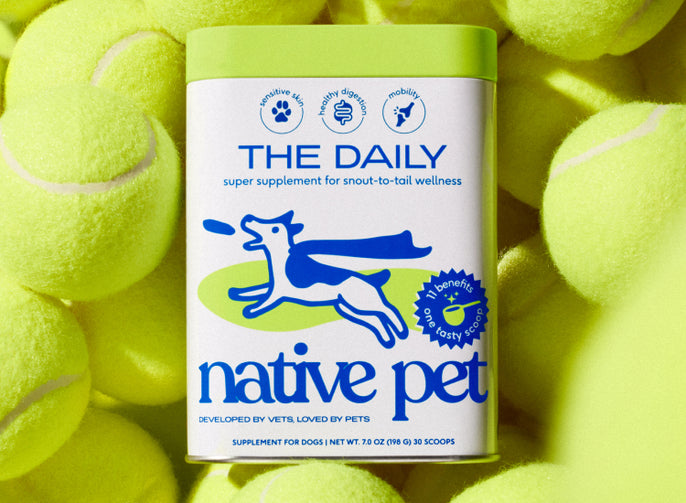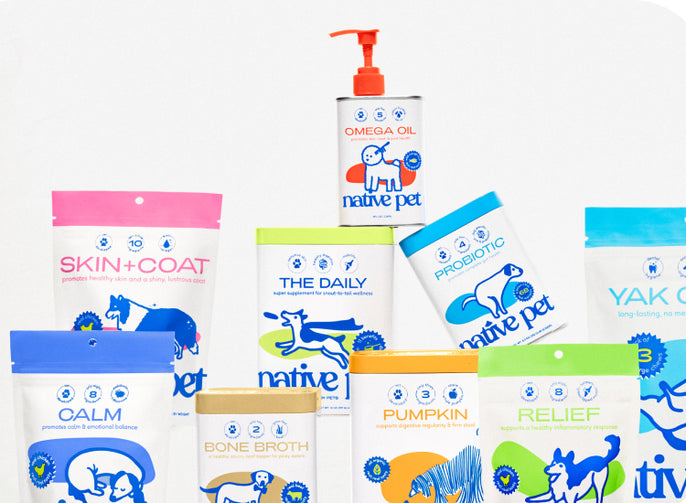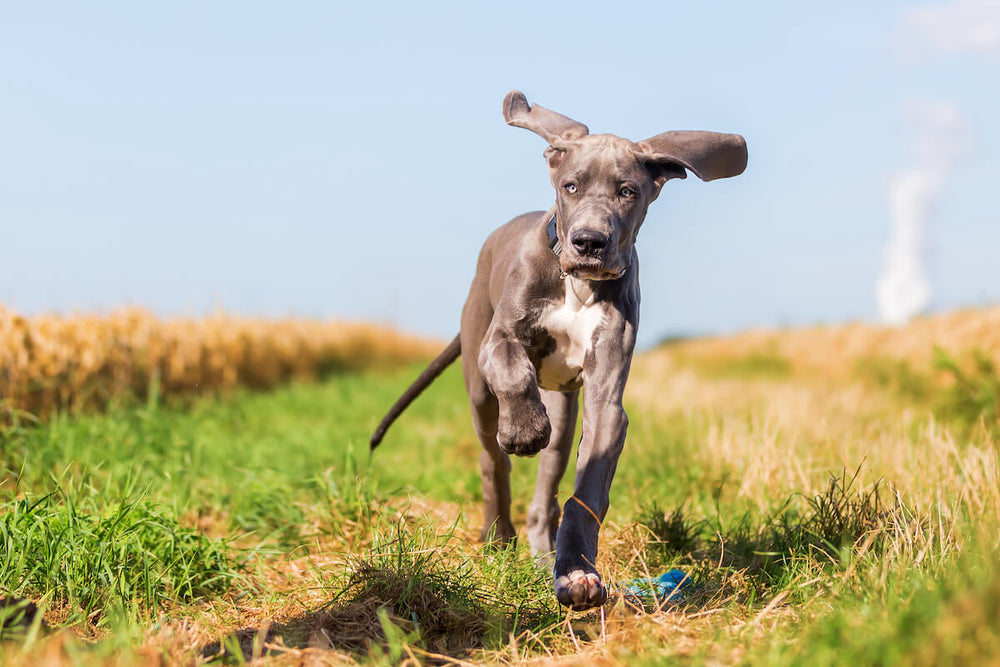For dog lovers who want an XL cuddle companion, the Great Dane is an ideal breed of dog. This gentle giant is consistently listed among the best apartment dogs — despite its large size — because it’s a lovable couch potato, ready to curl up for a movie night at any moment.
There’s just one problem — okay, there’s also a lot of drooling, so maybe there are two problems — but the biggest problem is the Great Dane life expectancy. This breed has a short lifespan compared to other purebreds. Still, these devoted family dogs can provide many years of love and loyalty.
Let’s look at the Great Dane life expectancy, the health problems you can expect from this giant breed, and what you can do to ensure your best friend remains healthy into old age.
What Is the Great Dane Life Expectancy?

The average lifespan of a Great Dane is 7-10 years of age. That’s a shorter lifespan than most purebred dogs, which live an average of 11.9 years. Mixed breeds are even healthier with an average lifespan of 13.1 years, according to data from the UK’s Royal Society for the Prevention of Cruelty to Animals (RSPCA).
Purebred dogs tend to have shorter lifespans overall. Veterinary researchers have often speculated that a lack of genetic diversity in purebreds has led to more health issues, which has led to their shorter lives.
But, according to the American Kennel Club (AKC), the authority on purebred dogs in the United States, most dog breeds live somewhere between 8 and 15 years. So, even compared to other purebred dogs, the Great Dane has a short lifespan.
Factors that Influence the Great Dane’s Lifespan

Genetics plays an important role in Great Dane life expectancy. This breed’s genes have led to its enormous size and predisposed it to several health conditions — and both of these factors have shortened this large breed’s lifespan.
Here’s how the Great Dane’s size and health issues affect its life expectancy.
Size
According to expert advice from the AKC, size is one of the most important factors in determining a dog’s lifespan. Big dogs have shorter lifespans than small dogs, regardless of the dogs’ breed. This trend is actually seen across all species. While there are many long-lived large species, like elephants, smaller individuals within the species often live longer than large — and scientists aren’t sure why.
One thing that researchers are sure of is that the lifespan of smaller dogs is about one year longer than the lifespan of medium dogs, like the husky lifespan or beagle lifespan. Small breeds live as much as 1.5 years longer than large dog breeds and nearly five years longer than the Great Dane.
The especially short lifespan of Great Danes is no surprise when you account for the fact that this dog isn’t merely a large breed — it’s a giant breed. And when you compare the Great Dane life expectancy to the life expectancy of other giant breeds, the numbers are similar.
The Irish wolfhound lives 6-8 years on average, and the mastiff lives 6-10. Both Irish wolfhounds and English mastiffs are ancestors of the Great Dane, which may account for the similar life expectancies. But you’ll also see similar numbers for unrelated giant breeds like the Bernese Mountain Dog (7-10 years), Dogue de Bordeaux (5-8 years), and Leonberger (7 years). Fun fact: The world’s tallest dog was a Great Dane named Freddy who lived 8 years.
Health Issues
One of the causes of giant breeds' shorter life expectancy is that they're at a higher risk of developing certain health problems, including cancer. The Great Dane is no exception. Here are the most common health conditions that affect the Great Dane life expectancy:
- Gastric dilatation volvulus (GDV): More commonly called bloat, GDV is the most common cause of death in Great Danes. The condition can obstruct the blood supply from the dog’s stomach to its heart or cause the stomach lining to rupture. Early signs include a distended abdomen, wrenching, drooling, or abdominal pain.
- Osteosarcoma: This aggressive form of bone cancer causes painful tumors to form on and destroy bones. Early signs include lameness and swelling where the tumors are located.
- Dilated cardiomyopathy (DCM): This form of heart disease can cause your dog’s heart to stop. The FDA is currently investigating a link between grain-free dog food and DCM, so avoid feeding your Great Dane grain-free food for now. Early signs of DCM include lethargy, weight loss, cough, and an increased respiratory rate.
- Hypothyroidism: If your dog has this condition, their thyroid will be underactive and unable to produce enough thyroid hormones. This causes many of your dog’s vital functions to slow down. Early signs include lethargy, weight gain, obesity, and changes in their coat.
- Joint diseases: Because their joints develop more slowly and support more weight, Great Danes are prone to a variety of joint issues, like hip dysplasia and arthritis. While joint issues aren’t a cause of death, they can decrease your dog’s mobility, leading to a shorter lifespan.
What Dog Owners Can Do to Extend Their Great Dane’s Lifespan

While it's unlikely that a Great Dane will ever live as long as a chihuahua, dog owners can take steps to help their big bestie live a healthy life. Here’s what you can do to ensure your Great Dane remains healthy into their golden years:
- Choose a healthy Great Dane puppy: Look for responsible breeders who have earned an AKC Breeder of Merit or Bred With H.E.A.R.T. certification. Or, ask any breeder if they run the AKC’s recommended health screenings for Great Danes, including a hip, eye, thyroid, and heart exam.
- Consider spaying or neutering: An in-depth study into canine longevity found that dogs that are spayed or neutered live longer than dogs that aren’t. Unless you plan on breeding your Great Dane, ask your vet about spay and neuter surgery.
- Keep up with dental cleanings: That same study also found that dogs who get annual dental cleaning have longer lives.
- Get regular checkups: Make sure your vet gets a checkup at least once a year. This ensures your pet is up-to-date on their vaccines and helps your vet identify potential health issues early, which can give you more treatment options and lead to better outcomes for your dog.
- Feed a healthy diet: Look for high-quality dog food that features a whole protein source as the first ingredient and includes whole-food fruits and vegetables. Avoid feeding grain-free food (for the reasons we stated above), and make sure your Great Dane puppy eats a large-breed puppy formula to promote healthy bone growth.
- Give them multiple small meals each day: It’s not just what you feed your dog that matters. It’s also how you feed them. If you feed your Great Dane one large meal, they will be at a higher risk for GDV. Instead, feed 2-3 small meals, and be careful about portion size to prevent obesity. According to research, obesity can shorten a dog’s life by up to 2.5 years.
- Provide regular exercise: According to veterinary research, regular exercise can help prevent obesity, keep your dog’s joints healthy, and allow them to remain mobile into old age. For long-term joint health, choose low-impact exercises, like walking and swimming, instead of joint-pounding high-impact exercises, like running and jumping.
- Protect their joints: To keep your Great Dane active and healthy, protect their joints with scientifically proven supplements, like omega-3 fish oil, over highly processed glucosamine supplements. And look for all-natural anti-inflammatories, like a relief supplement with turmeric, black pepper, and green-lipped mussels.
Great Danes Deserve a Great Life

While Great Danes may not have a long life, you can ensure they have a great life. Feed your dog a healthy diet, provide regular low-impact exercise, never miss a checkup, and try all-natural supplements, like omega-3 fish oil and an anti-inflammatory turmeric chew.
This giant breed may never live as long as a small breed dog, but during their 7-10 years, they will fill your life with big snuggles, big kisses, and big fun. For more information on how to keep your best friend happy and healthy, check out the Native Pet blog.

